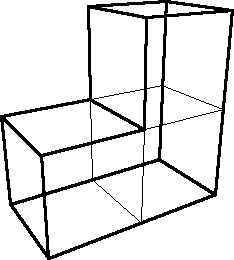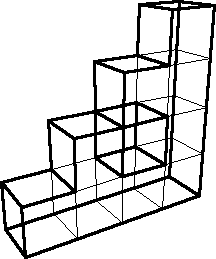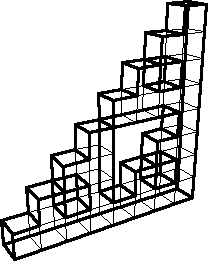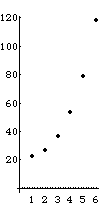| Recognizing the bracketed sum in Pn is a finite geometric series, we see |
Pn = (3n-1*22 - 13*(1 + 3 + 32 + ... + 3n-2))*(1/2n-1) |
= (3n-1*22 - 13*(1 - 3n-1)/(1 - 3))*(1/2n-1) |
= (3n-1*(22 - (13/2)) + 13/2)*(1/2n-1) |
| So Pn -> infinity as n -> infinity. |
| This suggests the limiting shape has infinite perimeter, yet some care is needed. |
| The perimeters of the cubes are longer than the perimeters of the corresponding pieces of the limiting shape, so we have just shown
that infinity is an upper bound for the perimeter of the limiting shape. |
| More carefully, we see the limiting shape is a right isosceles gasket, which we have seen
has infinite perimeter. |
| This is no surprise: the gasket has dimension Log(3)/Log(2) > 1, the perimeter is a 1-dimensional measure, and so the perimeter
of a Log(3)/Log(2)-dimensional object is infinite. |






